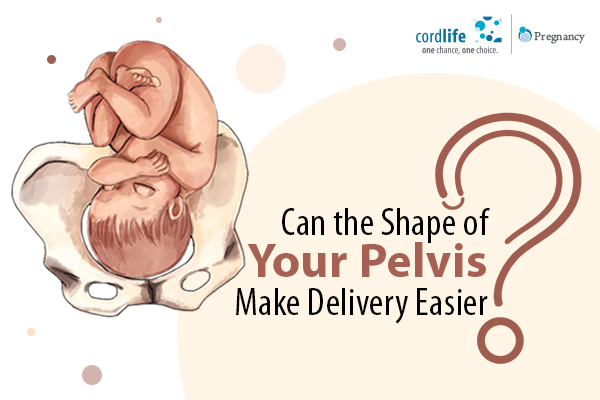Table of Contents
It’s common knowledge that men and women have different pelvis shapes. These bones located between your thighs and lower back are generally broader in women to help with a vaginal delivery. However, not all women have the same pelvis shape, which can affect delivery. After all, the birth canal through which your baby comes into this world passes through the pelvic cavity. This article will take you through the four different pelvis shapes and how each one can affect childbirth.
Gynecoid Pelvis
Most women will have this pelvis shape, which is round, shallow and open, thereby facilitating an easier vaginal delivery. Thus, it’s considered the most favourable type as the wider pelvis provides the baby with more room to pass through the birth canal. If your doctor refers to your hips as ‘childbearing hips’, they are most likely referring to this shape. Women with this pelvis shape are more likely to retain fat around their hips and tend to be considered curvy.
Android Pelvis
Since this type is narrow and shaped like a heart, it’s considered similar to a male pelvis. Because of this, labour and delivery can be more painful and challenging, as your baby will take more time to pass through the birth canal. Taller women are more likely to have this pelvis shape. Women with this condition may have to deliver via a C-section. However, this doesn’t completely rule out a normal vaginal delivery. If your doctor recommends it, you will be asked to move more during childbirth. Also, get ready to push harder to help your baby through, and you can expect more prolonged labour and delivery.
Anthropoid Pelvis
While this shape is also wide like a gynecoid pelvis, it’s wider from front to back instead of side to side. This, too, can result in longer labour, as there is less room for your pelvis to open wide enough for your baby to pass through. Women with this pelvis shape will find themselves heavier around the abdomen and buttocks. You will need to be active during labour and even try squatting and walking to ease childbirth.
Platypelloid Pelvis
Also known as a flat pelvis, this pelvis is wide but shallow and looks similar to an egg lying on its side. It’s the least common pelvis shape and leads to a longer than usual labour as your baby will find it difficult to enter the pelvis. However, once your baby does enter the pelvis, labour will become more comfortable for you.
So, how do you find out your pelvis shape? Earlier, the practice was to use X-rays, but this isn’t done anymore. However, your doctor will examine your pelvis to gauge its form.
While the shape of your pelvis can indicate how your labour and delivery will go, it’s not the only factor determining whether you will have a vaginal or C-section delivery or how easy delivery will be. So, even if you have childbearing hips or a gynecoid pelvis, you may face difficulties during labour and still require a C-section. On the other hand, if you don’t have a gynecoid pelvis, but all other conditions are favourable, you can still have a normal delivery. The size of your baby, their position, your health and the strength of your contractions are other factors that will determine how labour will go. Don’t worry too much about the shape of your pelvis unless your doctor is alarmed about the same.
